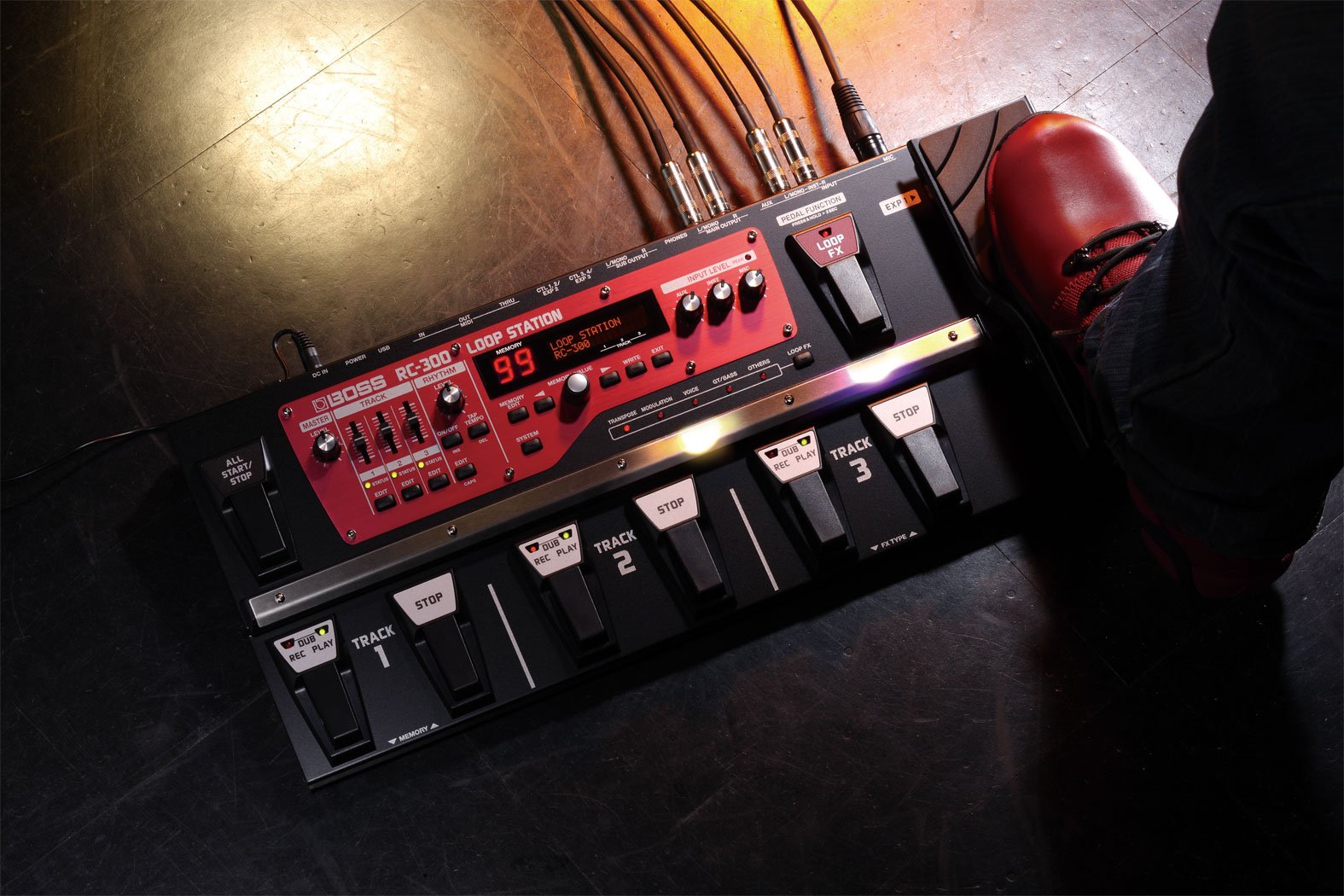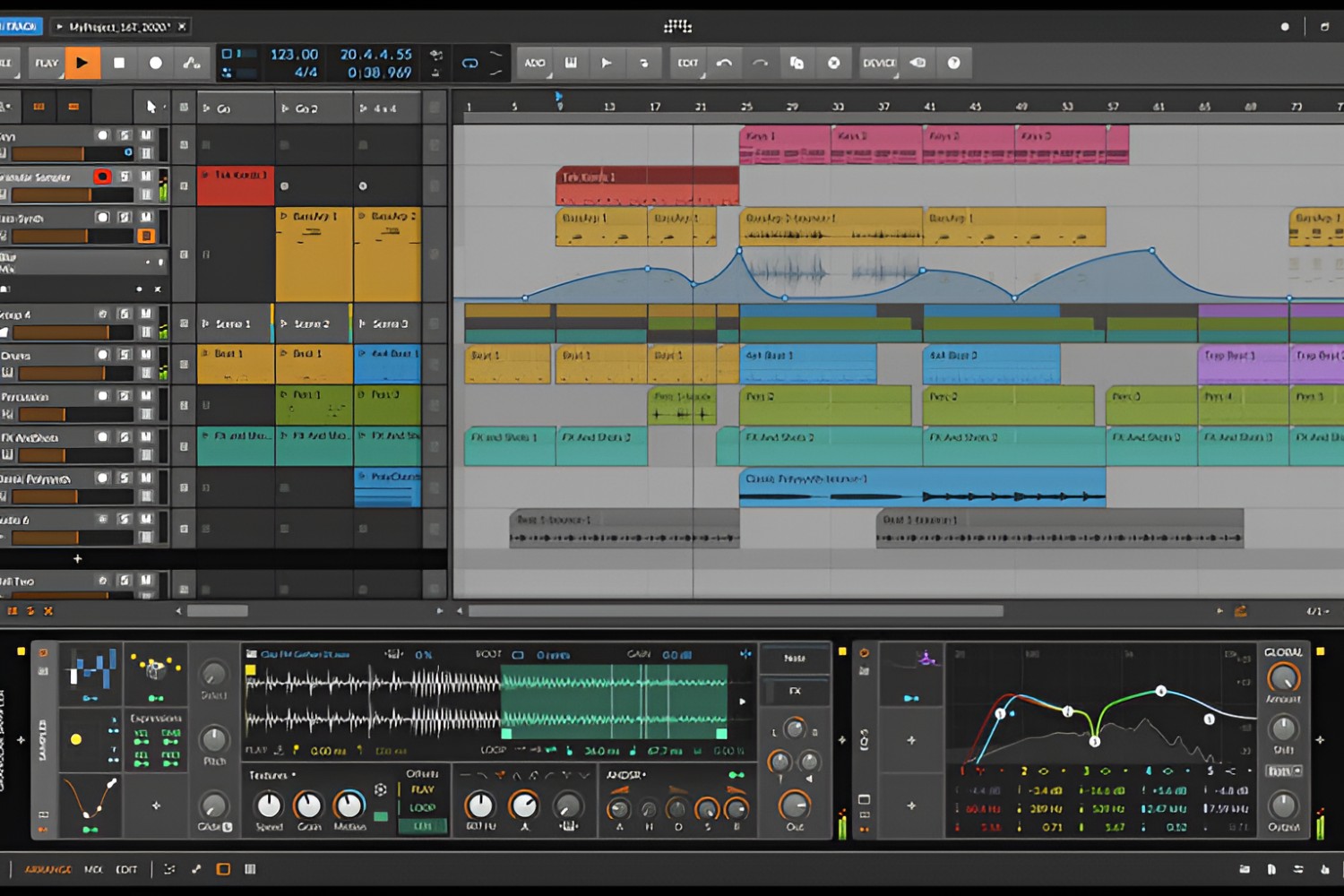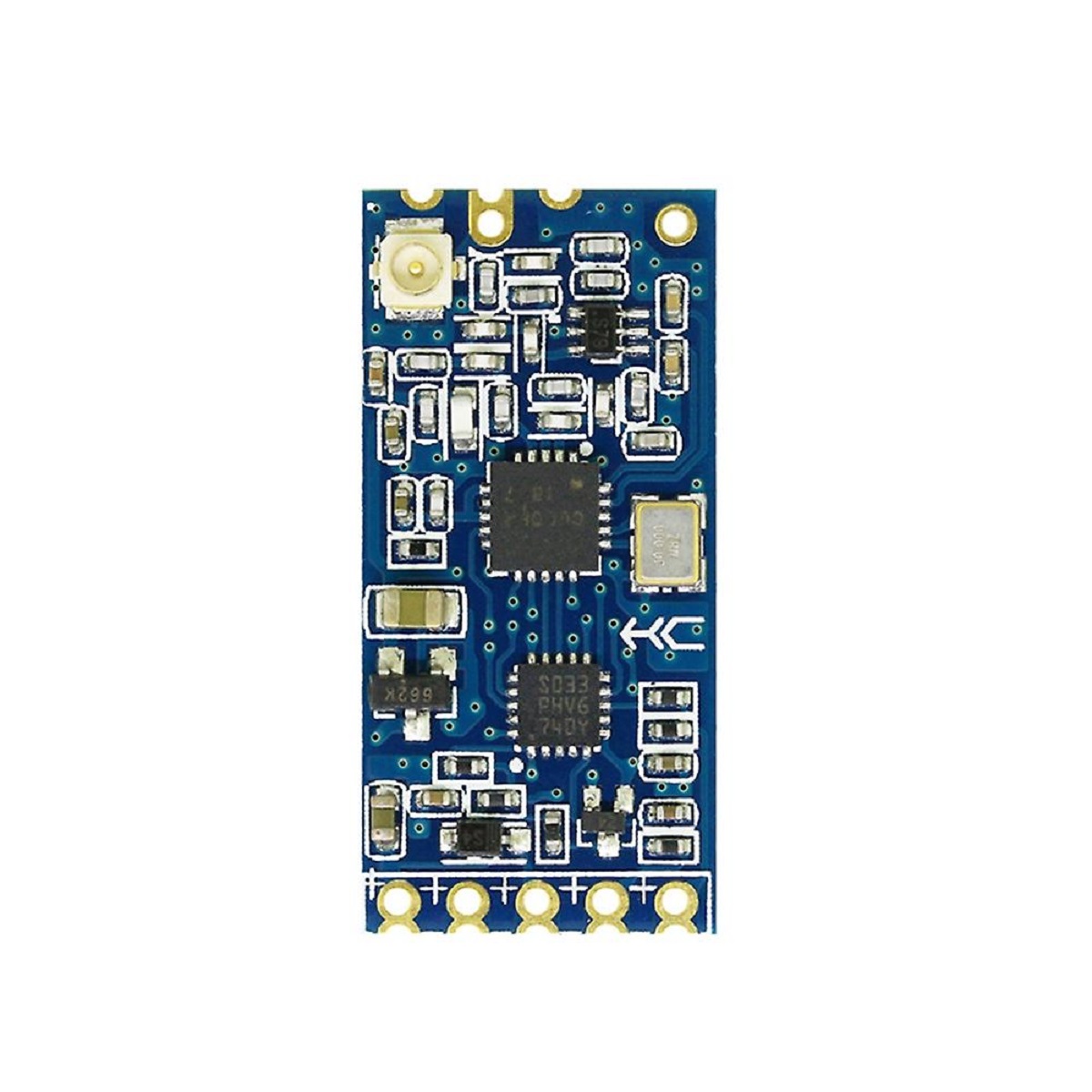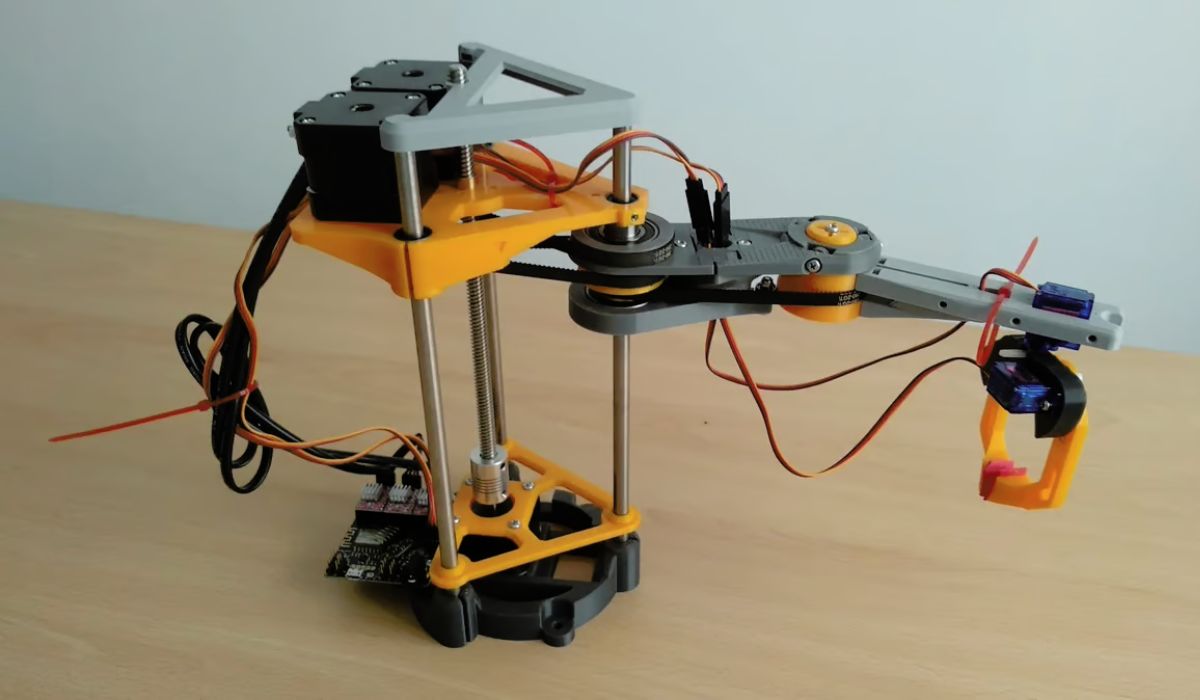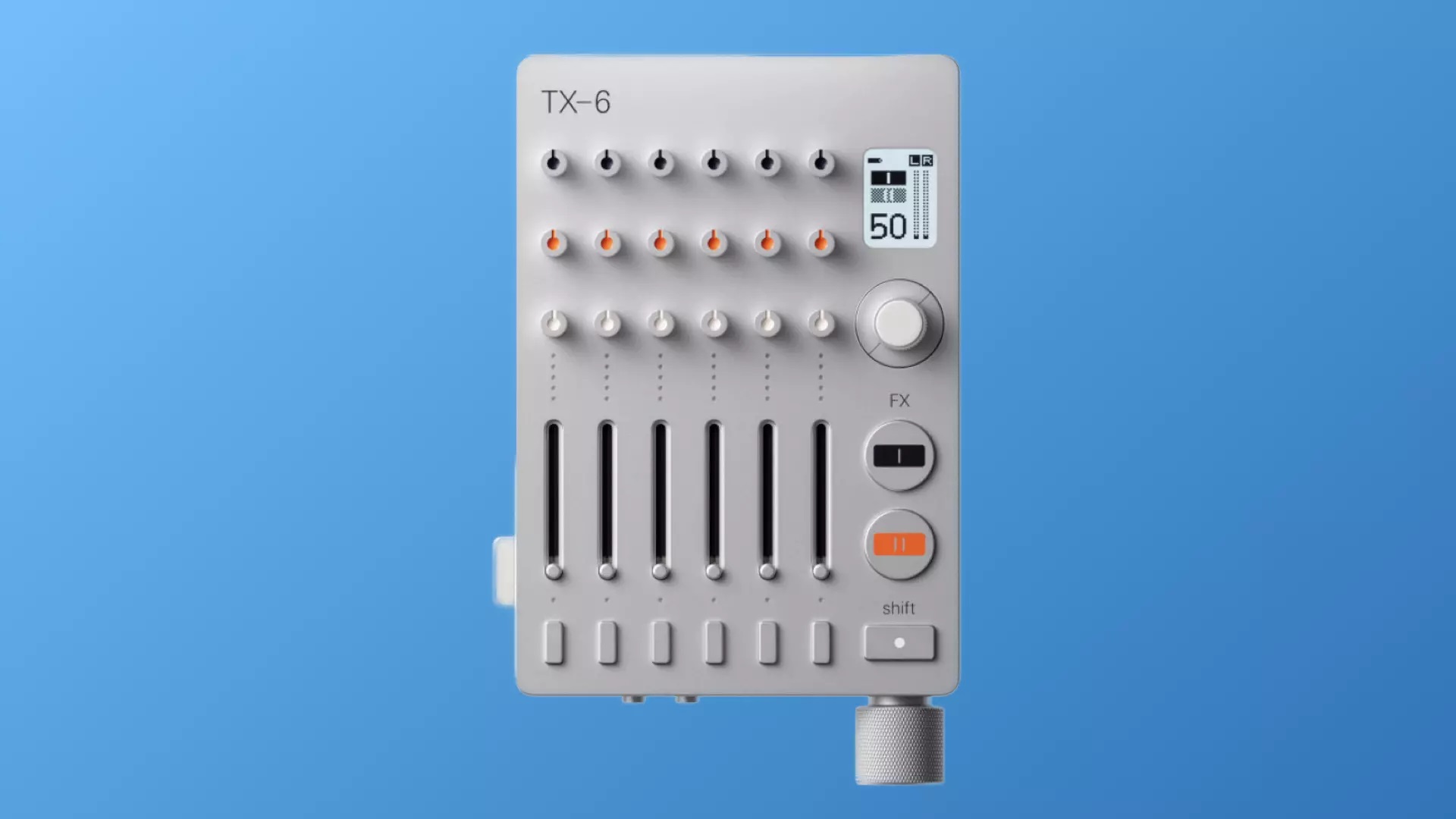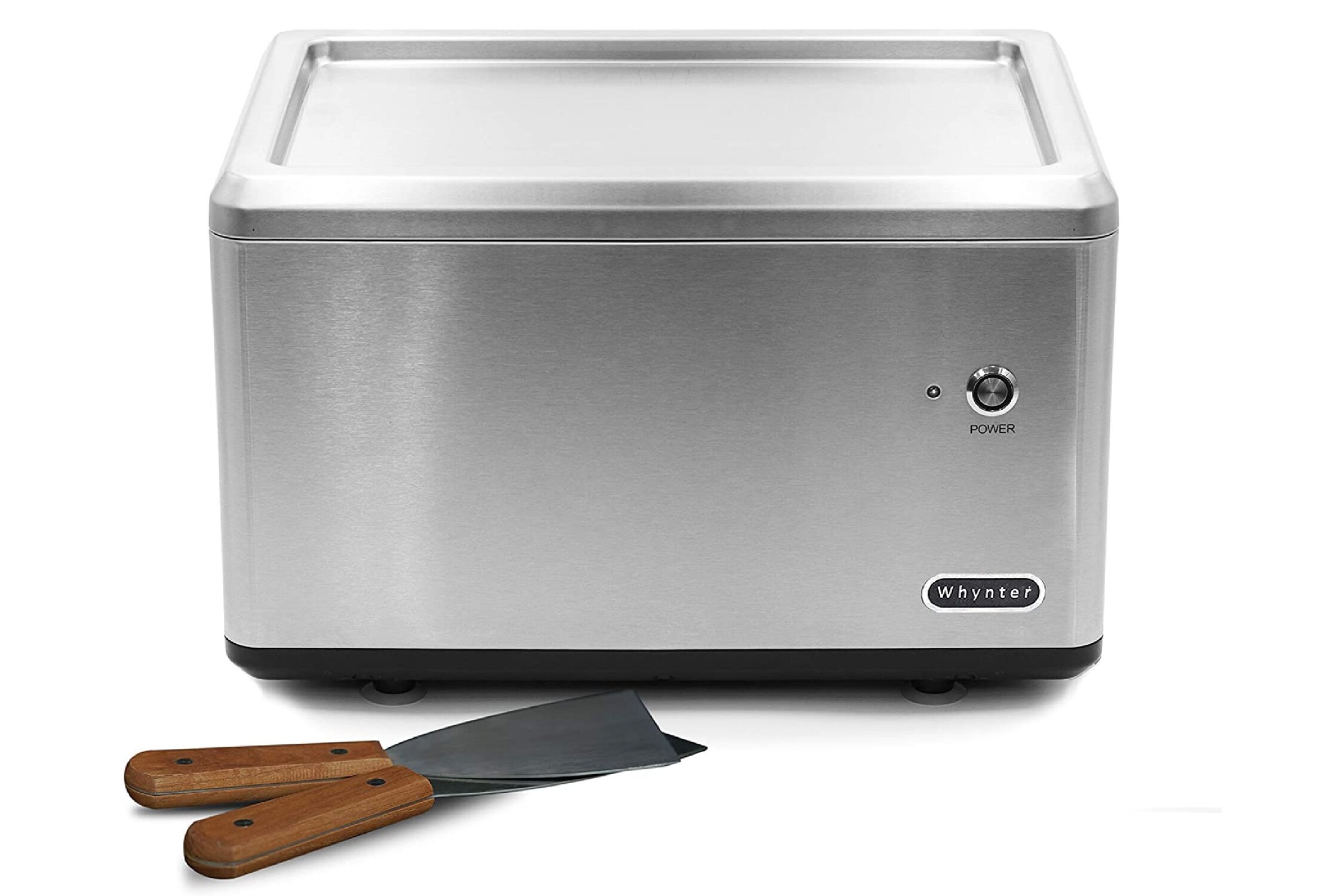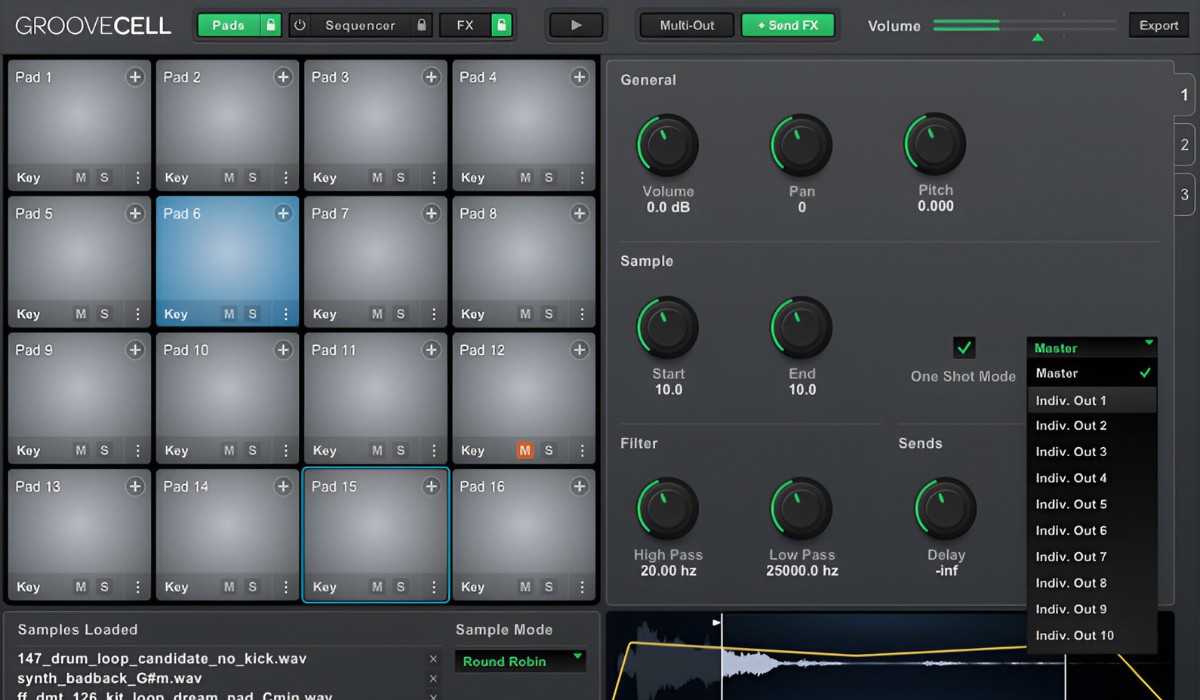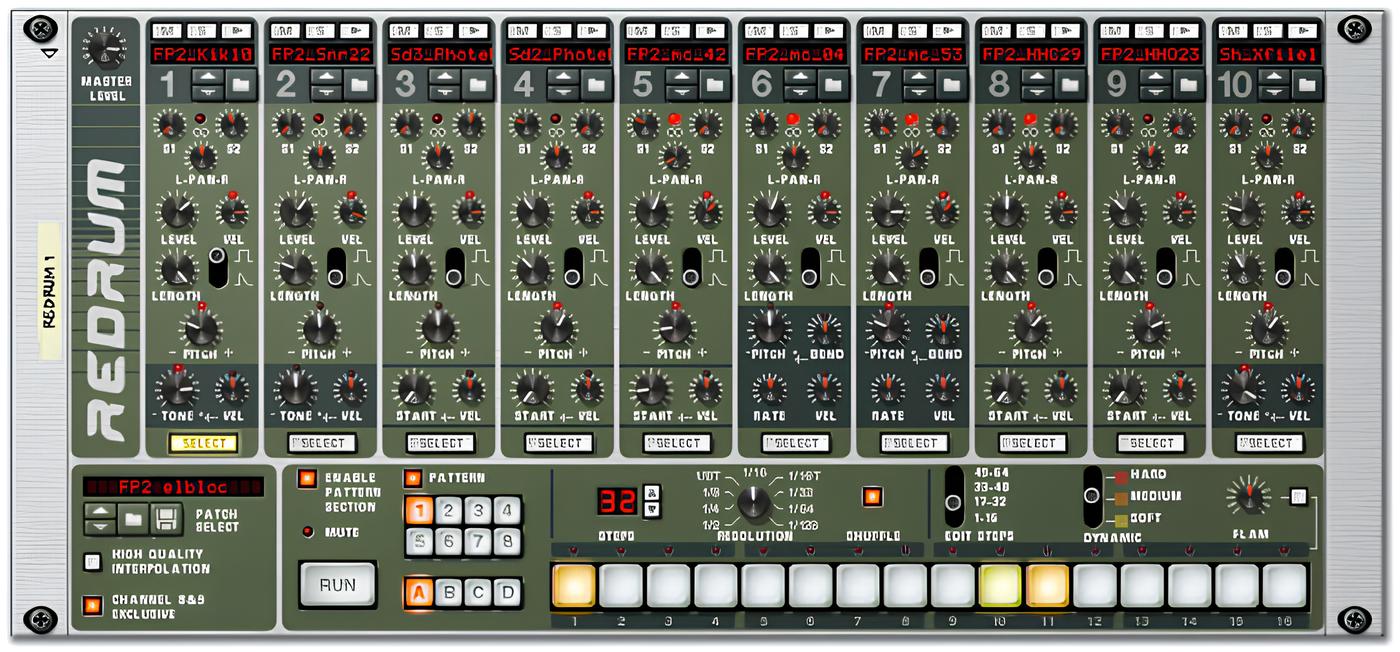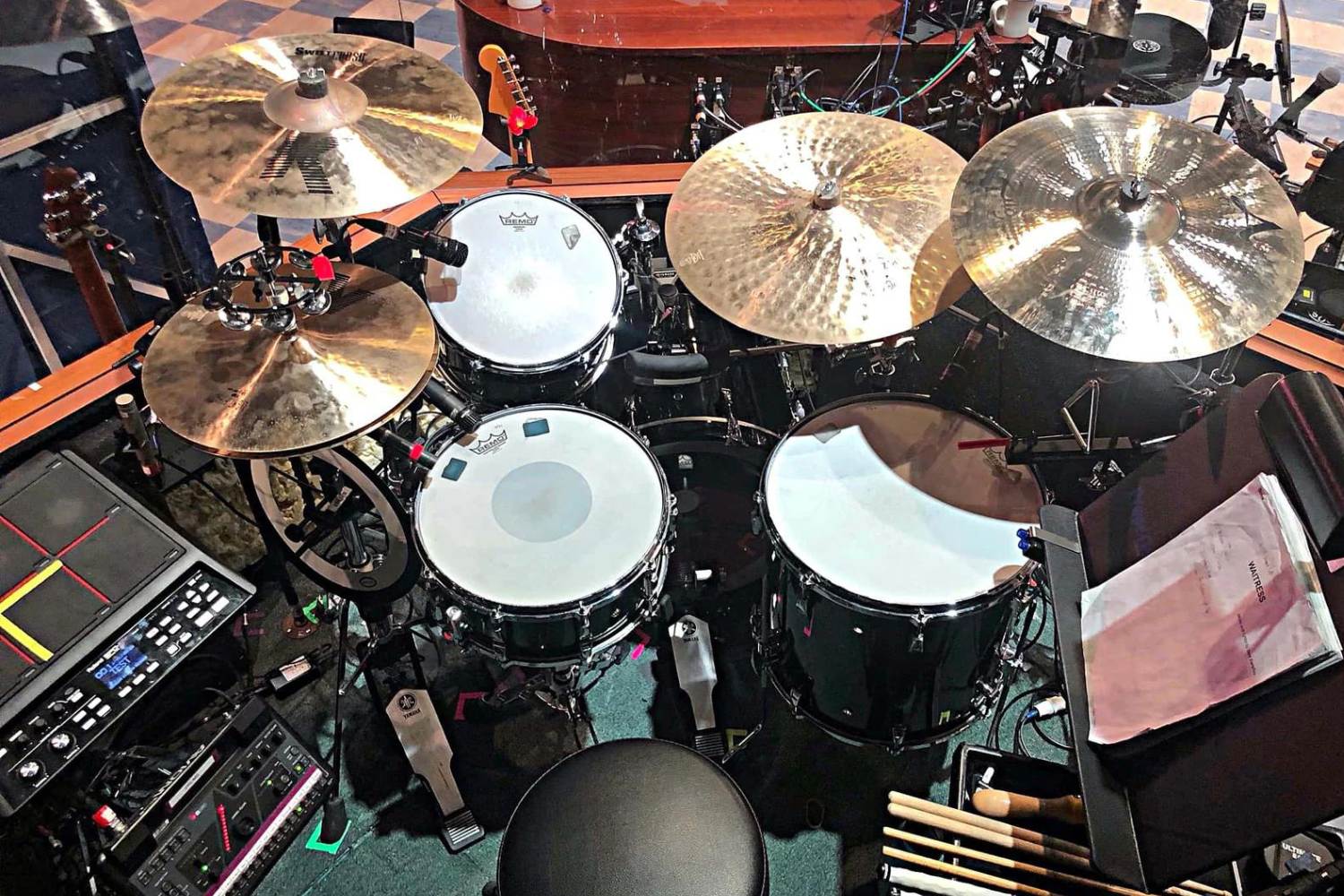Introduction
Are you ready to take your musical performances to the next level? Connecting your RC-300 Loop Station to a drum machine can add depth and dynamism to your sound. Whether you're a solo artist or part of a band, syncing your RC-300 with a drum machine opens up a world of creative possibilities. In this guide, we'll walk you through the process of slaving your RC-300 to a drum machine, allowing you to effortlessly integrate captivating drum patterns into your live performances.
By following these steps, you'll be able to synchronize the tempo and control the start/stop functions of the drum machine using your RC-300, giving you the freedom to focus on your performance without being tied down by technicalities. Whether you're a seasoned musician or just starting out, this guide will help you harness the full potential of these powerful musical tools, enabling you to create rich, layered sounds that will captivate your audience.
So, grab your RC-300, dust off your drum machine, and let's dive into the exciting world of live looping and drum synchronization. It's time to elevate your music to new heights and deliver unforgettable performances that will leave a lasting impression on your listeners.
Setting up the RC-300
Before diving into the intricacies of syncing your RC-300 with a drum machine, it’s crucial to ensure that your RC-300 is properly set up and ready to interface with the drum machine. Here’s a step-by-step guide to get your RC-300 prepared for seamless integration:
- Power On: Start by powering on your RC-300 Loop Station. Ensure that it is connected to a reliable power source to avoid any interruptions during your performance.
- Check Connections: Inspect the input and output connections of the RC-300 to verify that all cables are securely plugged in. This includes the instrument inputs, outputs to amplifiers or speakers, and any additional MIDI or USB connections that may be required for interfacing with the drum machine.
- Update Firmware: It’s recommended to check for and install any available firmware updates for your RC-300. Keeping the firmware up to date can resolve potential compatibility issues and ensure smooth operation when connecting to external devices, such as a drum machine.
- Adjust Settings: Navigate through the settings menu of the RC-300 to configure parameters such as master tempo, audio routing, and MIDI settings. These adjustments will optimize the RC-300 for synchronization with the drum machine and enable seamless control over tempo and start/stop functions.
- Test Functionality: Before proceeding to connect the drum machine, conduct a brief test to ensure that the RC-300 is functioning as expected. Verify that you can record and playback loops, adjust volume levels, and engage various effects without encountering any technical issues.
By meticulously setting up your RC-300, you lay a solid foundation for integrating it with a drum machine. This preliminary preparation will streamline the process of connecting and syncing the devices, allowing you to focus on creating captivating music without being hindered by setup complications.
Connecting the Drum Machine
Once your RC-300 is primed for integration, the next crucial step is to establish a physical connection between the RC-300 and the drum machine. This connection will facilitate the exchange of tempo information and synchronization signals, enabling the two devices to operate harmoniously. Here’s how to connect your drum machine to the RC-300:
- Identify Connection Ports: Locate the appropriate input and output ports on both the RC-300 and the drum machine. Depending on the specific models, these ports may include MIDI, USB, audio, or a combination of these interfaces.
- Use Compatible Cables: Select high-quality cables that are compatible with the input and output ports of both devices. For MIDI connections, MIDI cables are typically used, while audio connections may require standard instrument cables or specialized adapters.
- Establish Physical Connection: Connect the output ports of the drum machine to the input ports of the RC-300, and vice versa, using the chosen cables. Ensure that the connections are secure to prevent signal loss or interference during operation.
- Verify Signal Flow: Once the physical connections are in place, verify the signal flow by testing the communication between the RC-300 and the drum machine. This can involve sending MIDI clock signals, audio playback, or any specific synchronization protocols supported by the devices.
- Configure MIDI Settings: If utilizing MIDI connections, access the MIDI settings on both the RC-300 and the drum machine to establish the appropriate communication protocols. This may include setting the MIDI channel, clock source, and sync preferences to ensure seamless tempo synchronization.
By establishing a robust physical and digital connection between the RC-300 and the drum machine, you pave the way for a cohesive musical collaboration. This connection forms the backbone of synchronized performance, allowing the devices to communicate effectively and deliver a unified musical experience.
Syncing the Tempo
Once the RC-300 and the drum machine are connected, the next step is to ensure that their tempos are synchronized. This synchronization is essential for maintaining a consistent rhythm and seamless transitions between loops and drum patterns. Here’s how to sync the tempo between your RC-300 and the drum machine:
- Master/Slave Configuration: Determine whether the RC-300 will serve as the master device, controlling the tempo of the drum machine, or if it will operate as the slave, syncing to the tempo generated by the drum machine. This configuration will dictate the flow of tempo information between the devices.
- Set Master Tempo: If the RC-300 is designated as the master device, set the master tempo on the RC-300 to the desired beats per minute (BPM). This tempo will serve as the reference for the drum machine to synchronize with, ensuring that both devices operate in unison.
- Configure Slave Tempo: If the drum machine is set as the master device, configure the RC-300 to receive tempo information from the drum machine. This may involve selecting the appropriate MIDI clock settings or sync parameters to enable the RC-300 to lock onto the tempo generated by the drum machine.
- Test Synchronization: Initiate playback on the RC-300 and the drum machine to verify that their tempos are synchronized. Observe the timing of loops, drum patterns, and any rhythmic elements to confirm that they align seamlessly without noticeable fluctuations or timing discrepancies.
- Adjustments and Fine-Tuning: Fine-tune the tempo settings on both devices as needed to achieve optimal synchronization. This may involve making minor adjustments to the BPM, MIDI clock divisions, or sync offsets to ensure precise alignment of musical elements.
By syncing the tempo between your RC-300 and the drum machine, you establish a cohesive rhythmic foundation for your performances. This synchronization empowers you to seamlessly transition between loops, drum patterns, and musical sections, enhancing the overall coherence and impact of your musical arrangements.
Using the RC-300 as a Master/Slave Device
Understanding the functionality of the RC-300 as both a master and slave device is essential for harnessing its full potential in conjunction with a drum machine. Depending on the specific requirements of your performance and the capabilities of your drum machine, the RC-300 can seamlessly adapt to serve as either the master or the slave in the synchronization process. Here’s how to leverage the RC-300 as a master or slave device:
- Master Mode: When operating as the master device, the RC-300 dictates the tempo and timing of the performance, exerting control over the drum machine’s playback and synchronization. This mode is ideal for scenarios where you prefer to have the RC-300 as the central hub for tempo management and loop control, with the drum machine following its lead.
- Slave Mode: In slave mode, the RC-300 synchronizes its tempo and playback with the signals received from the drum machine, effectively aligning its loops and rhythmic elements with the tempo generated by the drum machine. This mode is advantageous when the drum machine serves as the primary source of tempo and rhythm, allowing the RC-300 to adapt and complement the established timing.
- Dynamic Switching: The RC-300 offers the flexibility to dynamically switch between master and slave modes during a performance, enabling seamless transitions and adaptability to evolving musical arrangements. This dynamic switching capability empowers you to respond to changes in tempo requirements or rhythmic structures without interrupting the flow of your music.
- Performance Control: Regardless of the selected mode, the RC-300 provides comprehensive performance control, allowing you to trigger loops, apply effects, and modulate audio parameters while maintaining synchronization with the drum machine. This level of control enhances the expressiveness and versatility of your live performances.
By mastering the art of utilizing the RC-300 as a master or slave device, you unlock a myriad of creative possibilities for crafting captivating musical experiences. Whether taking the lead in tempo management or harmonizing with external rhythmic sources, the RC-300 adapts to your performance needs, amplifying the depth and complexity of your musical compositions.
Tips for a Seamless Performance
As you prepare to integrate your RC-300 with a drum machine for live performances, consider the following tips to ensure a seamless and captivating musical experience:
- Sound Check and Rehearsals: Prior to your performance, conduct thorough sound checks and rehearsals to fine-tune the synchronization between the RC-300 and the drum machine. This preparation allows you to address any potential issues and familiarize yourself with the intricacies of controlling both devices in a live setting.
- Backup Plans: Always have contingency plans in place in case of technical glitches or unexpected malfunctions. This may involve carrying spare cables, batteries, or alternative devices to mitigate the impact of unforeseen challenges during your performance.
- Customized Presets: Create customized presets on the RC-300 for specific songs or musical arrangements, including tempo settings, effect configurations, and loop arrangements. Having tailored presets streamlines your performance workflow and ensures consistency across different musical pieces.
- Visual Cues: Use visual cues, such as LED indicators or display screens, to monitor the tempo synchronization between the RC-300 and the drum machine. Visual feedback enhances your awareness of timing and facilitates real-time adjustments during performances.
- Engage the Audience: While focusing on technical aspects, remember to engage with your audience and convey the emotional essence of your music. Maintain a balance between technical precision and expressive performance to create a memorable and immersive experience for your listeners.
- Collaborative Jamming: Explore collaborative jamming sessions with other musicians, leveraging the synchronized capabilities of the RC-300 and the drum machine to create dynamic and spontaneous musical interactions. Embrace improvisation and collective creativity to enrich your performances.
- Post-Performance Evaluation: After each performance, take time to evaluate the synchronization and overall integration of the RC-300 and the drum machine. Reflect on the strengths and areas for improvement, allowing you to refine your setup and performance techniques for future engagements.
By incorporating these tips into your live performances, you elevate the cohesiveness and professionalism of your musical presentations. The seamless integration of the RC-300 and a drum machine becomes a catalyst for unlocking your creative potential and delivering captivating performances that resonate with your audience.







